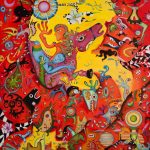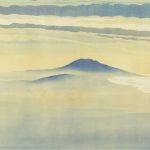Remnants of the Rice Culture – Agricultural History as Art | July 18 – August 30, 2015

Harriet Tubman Bridge, Combahee River, SC by David Shriver Soliday
The City of Charleston Office of Cultural Affairs presents Remnants of the Rice Culture – Agricultural History As Art at the City Gallery at Waterfront Park July 18 through August 30, 2015, featuring photography by David Shriver Soliday. The exhibition, curated by Mark Long, will open with a reception on Friday, July 17 from 6 to 8 p.m. In addition, the public is invited to attend an artist’s talk by Soliday on Saturday, August 15 at 2 p.m. Both events are free and open to the public.
Remnants of the Rice Culture – Agricultural History As Art, an exhibition of photographs by David Shriver Soliday, showcases the genesis and genealogy of the coastal rice production complex once known as the Rice Empire. This collection documents man’s 300-year-old record upon the landscape and explores the intersection between agricultural history and art. Soliday’s aerial perspective distinguishes the subtle fading imprints of rice production and frames the monumental scale of the precisely constructed fields, dikes and canals in ways otherwise difficult to apprehend. Highlighting the role of African-American labor and expertise in transforming the native swamplands into a highly engineered hydraulic machine, the artist’s compelling images, presented on infused aluminum sheet metal, prompt varied dialogues about the physical landscape, human capability and intervention, and the rice industry’s enduring environmental and social impact.
Remnants of the Rice Culture introduces new photography technology to the City Gallery at Waterfront Park – that of imaging on metal. Photographic images are infused into aluminum sheet metal at very high temperature and pressure. Soliday believes these prints raise the bar for museum quality presentations: “There is no photographic print technology that surpasses metal’s visual capabilities. Furthermore, the damage-resistant nature of metal is ideal in mitigating physical and environmental concerns at all stages – transport, display and storage.”
Curator Mark Long observes, “Soliday’s sustained charting of vestiges of rice production along hundreds of miles of the Eastern Seaboard over several decades has resulted in a comprehensive archive that attests to one of the great anthropogenic landscape complexes in world history.”
About the Artist
David Shriver Soliday is a freelance photographer whose editorial credits include the National Geographic, National Wildlife and Smithsonian.
Soliday spent most of his youth in the Litchfield Hills of Connecticut where early on he developed an interest in birds and photography. He began to seriously photograph while employed as an expedition mechanic. Trained in London by Land Rover, he maintained vehicles travelling from London to Nepal, in East Africa, and in northern Iceland. Developing an interest in world cultures, he earned a degree in cultural anthropology from Amherst College, Amherst, Massachusetts in 1976.
The following year, he moved to the Lowcountry and lived beside the rice lands for the next 25 years. He quickly became established with published photographs and occasional text in National Geographic Books & Calendars, National Wildlife, Smithsonian, and Geo magazines to name a few. His first major exhibition, A Retrospection, was shown at The Gibbes Museum in Charleston in 1977.
Throughout his career, Soliday has managed to apply his nature and landscape inclinations to commercial advertising photography. He spent years photographing golf landscapes, architecture, and interiors, for both resort and lifestyle publications.
Commercial work is Soliday’s livelihood, but he always tries to imbue his images with a certain authenticity and narrative. His attention to rice related work began almost immediately upon moving to South Carolina. That phase was active for about a decade, then became dormant for many. Upon resuming his study of the rice culture in 2007, he also returned to photographing the rice landscape.
Soliday considers the City Gallery at Waterfront Park exhibition a launching point for the pursuit of his long held dream of creating a companion portfolio of West African rice fields. Another new project of Soliday’s involves aerial landscapes of hand-dug antebellum drainage systems and transport canals. His hope is to ultimately convert his extensive writings and documentation of the rice culture into published materials.


